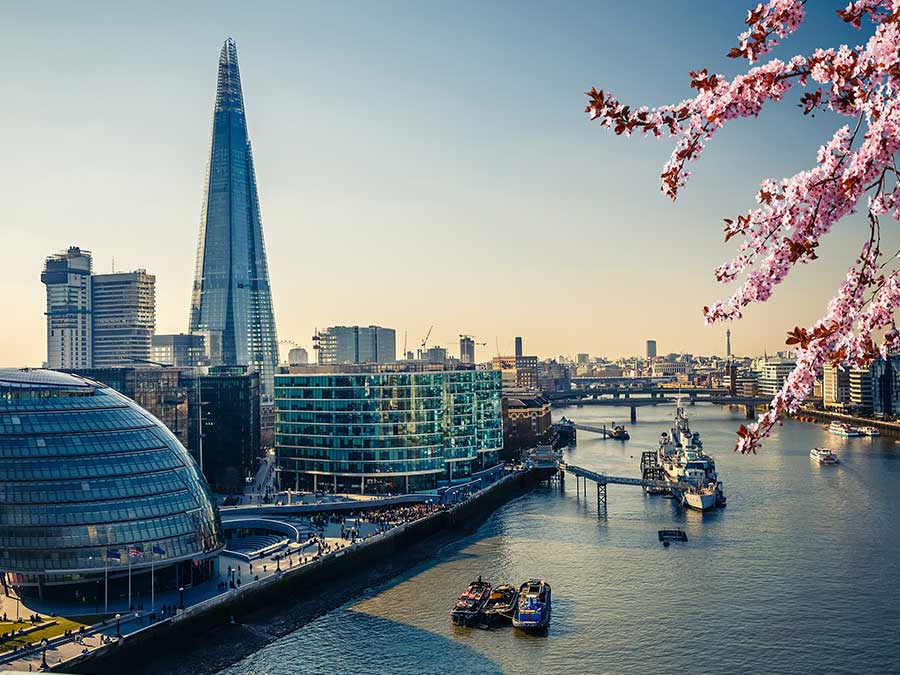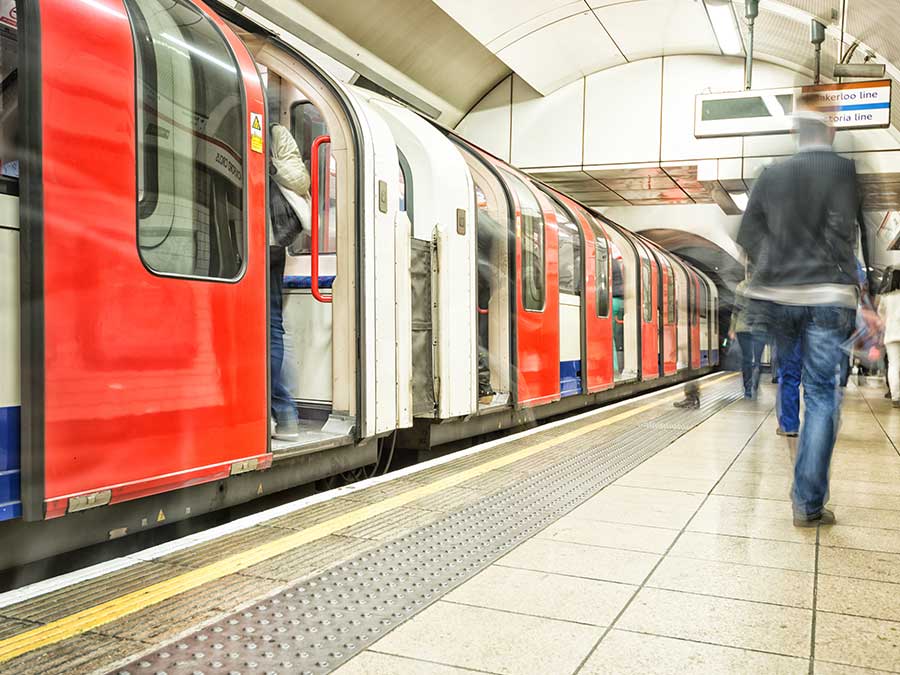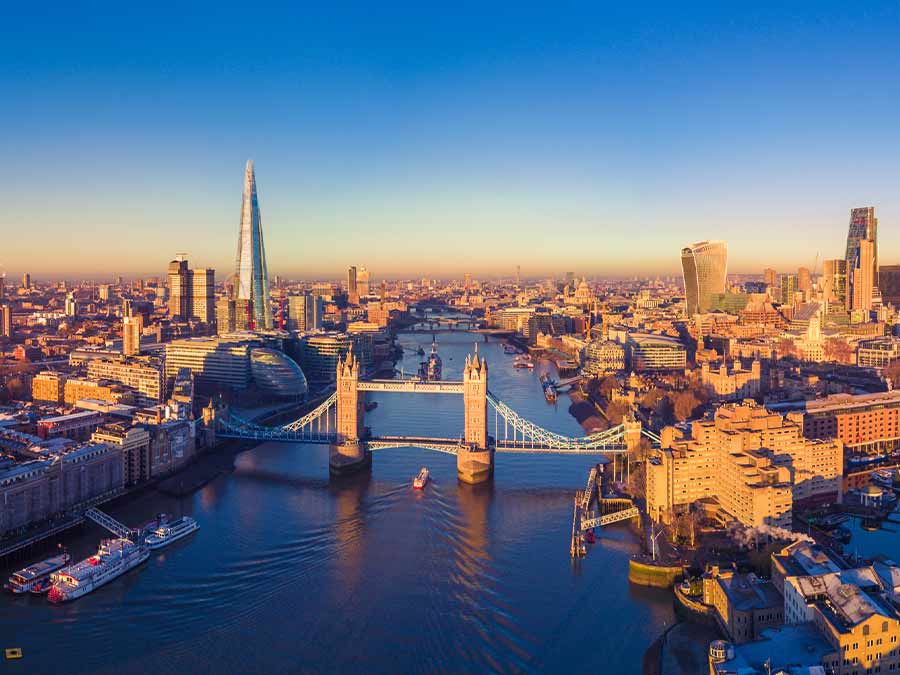
Getting around in the UK
The UK has a range of beautiful places to visit, linked by some equally picturesque country roads, as well as multi-lane highways and train lines. With such well-developed infrastructure and boasting the oldest public transport system in the world, it’s easy to access almost any area of the UK that you’re visiting.
Arriving in the UK
Border security and immigration are strict in the UK, and visitors are often subjected to rigorous security screening.
Luckily for us, the UK currently has a visa waiver program which allows entry without a visa for a stay of up to six months as a tourist. However, it’s important to check all requirements before booking flights. You will need to provide some supporting documents to show officers at the UK border.
You should keep printed copies of your supporting documents in your carry-on bag so that they’re easily accessible when you are passing through border security. When planning your trip, allow plenty of extra time for security checks and always book connecting flights at least three hours apart in case of delays. After all, it’s far better to spend a bit of extra time at the airport than to add extra stress by cutting deadlines too fine.
Domestic travel
Domestic flights are a quick and easy way to get around the UK. Security procedures are less intensive, but it’s still important to make sure you leave ample time to get through security and make it to your gate on time.
There are some popular budget airlines in the UK, some of which don’t offer allocated seating. If you’re travelling in a group and want to sit together, it’s a good idea to make sure you’re at the check in desk when it opens so you can get seats together. It pays to check the small print too, as many of the cheaper tickets on offer only include hand luggage. If you’re travelling with a suitcase, extra baggage charges bought at the airport can be very expensive!
The Tube
Almost as soon as you leave one of London’s five airports, chances are you’ll encounter the London Underground, more commonly known as the ‘Tube.’
The Tube is the go-to method of transport for this part of the country and in typical English style, there are rules and etiquette to follow. Here are our top tips for navigating the Tube:
- Individual trip tickets can be bought, but if you’re in London for a longer trip and plan to use the Tube frequently, it’s cheaper and more convenient to buy an Oyster card.
- Buy tickets and Oyster cards from official websites, ticket machines and ticket offices only – there are plenty of scams involving ticket sellers on the underground so don’t be fooled.
- The Tube map is easy to recognise, and you can find it on the wall of most tube stations and inside the carriages themselves, as well as free printed copies at some ticket offices.
- Always allow extra time for delays and crowding, especially in peak commuting times. It’s common for carriages to be overcrowded in peak times, so be prepared to wait for more than one train to pass before there is space to board.
- Rail strikes and engineering issues can be common, so be aware of this if you’re planning to travel on the tube and pay attention to updates. It’s always good to have a back-up plan to get to where you need to go, whether by bus, bike, boat or taxi.
- When the alarm sounds to indicate the doors are closing, make sure you and your personal belongings stay clear of the doors.
- It’s expected that people will offer their seats to passengers who need them, such as elderly or pregnant people. Mums-to-be are likely to be wearing a ‘baby on board’ badge.
- Keep your valuables close and well secured in the crowded tube stations, to protect yourself from pickpockets.
Taxis
The iconic black cabs are an easy way to get around and can be hailed anytime they have the yellow ‘TAXI’ light on. Black cabs are metered and there is a minimum charge, so check this before you hop aboard.
Another option is the minicab, which must be booked through a licenced minicab site or over the phone. These are often a cheaper alternative, but it’s important to be careful to book them through a licensed operator as there are many unlicensed minicabs around the city. According to London’s law, using an unlicensed minicab is illegal and dangerous – so stick to the official ones.
When it comes to taxis, there are still a few things to keep in mind:
- Keep your most valuable possessions on you when you are in a taxi, not in the boot.
- When you get in, take note of the taxi cab number. This will be displayed on the roof, the dashboard, the passenger door or behind the driver’s seat, and it’s the number you’ll need if you want to make a complaint or report.
- Have the driver put your luggage in the boot so that they can’t drive away with your stuff. Watch your luggage go in and make sure it is secure before you get in the vehicle.
- Always wear your seatbelt, even if you’re travelling a short distance.
Buses and coaches
Buses and coaches are popular in the UK, both as ways to get around cities and across many parts of the country. In the cities, you will often come across double decker buses, some of which will even have a conductor to check your tickets. If you have an Oyster visitor card, this can be used to pay for London city buses too. It’s important to remember that you can’t pay cash on any buses in London so you’ll need to buy your tickets in advance. You can still pay bus fares in cash in other parts of the UK, but it is worth checking this before you head off.
Travelling between destinations by coach is a great way to see the countryside as you go. Most coaches are comfortable and very cost-effective, although some journeys can take a while – for example, London to Aberdeen is around 12-13 hours. National Express and Megabus are both popular providers.
As with any form of public transport, keep your valuables on you at all times. Don’t put expensive valuables in the overhead compartments or out of sight, and if you have any complaints or concerns, speak to the driver when the coach is stationary.
Trains
Trains are popular and plentiful in the UK, and are a great way to travel around the country. They’re faster than buses, while still offering great views of the countryside, although they can be considerably more expensive.
Booking your tickets online is easy, as you can check timetables and avoid queues at the station. Be sure to read the fine print and know exactly what your ticket covers, such as allocated seating. Always check the timetables and be sure to arrive well in advance of your train’s departure time, to allow time to find your seat and stow your baggage.
While trains are a comfortable way to travel, don’t forget that they’re a common place for scammers and pickpockets to operate. Avoid running into trouble by following these tips:
- Stow your baggage within sight of your seat whenever possible.
- Keep your valuables on you, tucked away safe and never leave them in your luggage – especially if it’s stowed away from your seat.
- If you’re planning on sleeping during your journey, consider keeping things like passports and money concealed within your clothing, so you know they’re safe.
Driving and rental cars
If you plan on renting a vehicle, make sure:
- You’re familiar with and obey the local driving laws
- You hire the vehicle from a licensed rental vehicle agency
- You comply with the terms of the rental vehicle agreement
- You always wear your seatbelt, whether you’re a driver or passenger
- You drive on a formed or paved roadway or carpark
- You don’t drink and drive under any circumstances
You can drive a car in the UK using your full licence from home for up to 12 months, but you need to make sure it is valid for the duration of your trip and that you keep it on you whilst driving. Vehicles in the UK are usually manual transmission, so if you’re not used to driving manual cars make sure you specify a vehicle with an automatic transmission when you book.
Traffic and parking
London is notorious for its heavy traffic during peak commuting times. If you’re travelling around London by car, avoid travelling between 7-9am or 4-6pm, where possible. Your one-hour trip can easily become a three or four hour journey during these times. There’s also a congestion charge in place for any vehicles travelling in central London between 7am-6pm during weekdays, so keep this in mind and use public transport whenever possible. Parking in the city can also be very expensive and restrictive, with parking fines starting at 60GBP!
Checking for damage
When renting a vehicle, it’s important to take five minutes to photograph and document any existing damage it may have at the outset. Make sure the rental company is made aware of any damage you spot before you drive away. This ensures you’re not liable for damage you haven’t caused, and helps to prevent any misunderstandings when you return the vehicle to the rental company.
Download maps and apps
Navigating your way around the UK can be easier if you download maps of the areas you’re visiting, including public transport options. Make it simpler to find your way around by looking online at the places you want to visit and the best way to get there, before you head out.
Download maps for the public transport and tourist spots you’re visiting before you leave, as the public transport system can be complex and hard to navigate in large cities. Apps such as Maps with Me work both offline and online. Google Maps also allows you to save maps to your device so you can access them offline to save on data roaming.
The content of this article is general and provided for information purposes only. It is not intended to be medical advice. Southern Cross Travel Insurance (SCTI) doesn’t guarantee or warrant the accuracy, completeness or currency of the articles.
This article may contain hyperlinks to other websites owned or operated by third parties, or references to third party products or services. SCTI isn’t responsible for, and makes no recommendation about, the content or accuracy of any third party website, or for the suitability or performance of any product or service. The inclusion of a link in this article doesn’t imply that SCTI endorses the website or third party product/service.





